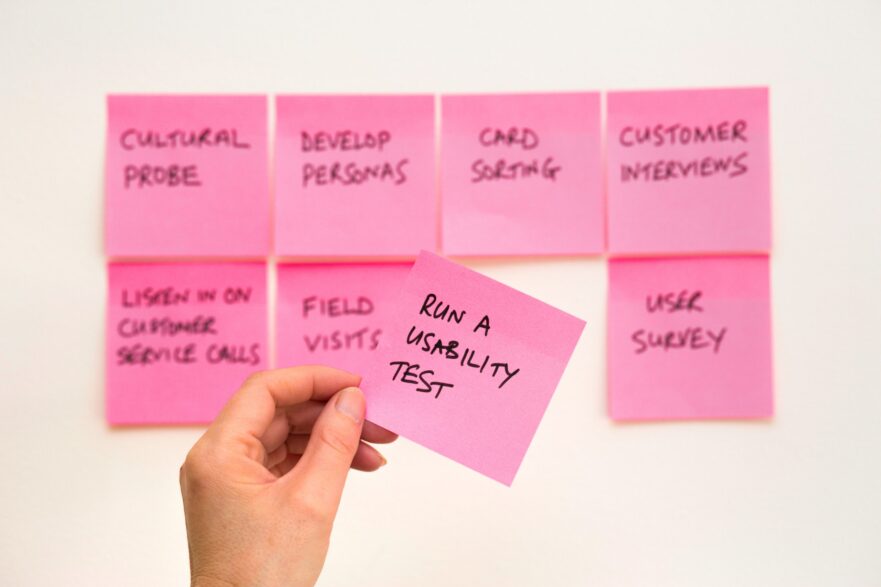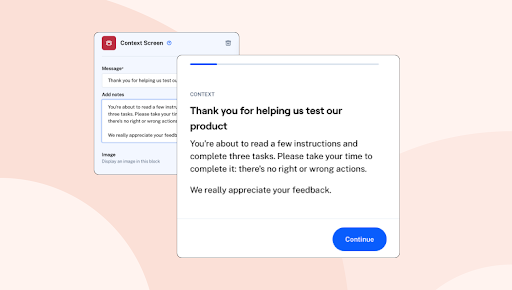

Usability testing is a proven and frequently used method for evaluating products. Businesses of all kinds test everything from physical products to online services and applications.
Why is usability research so popular?
Research shows that approximately 75% of the credibility of digital products, such as an app or website, stems from their design. Unless you create something usable, appealing and functional, your business could face a substantial loss of profit and clients.
Essentially, usability testing helps businesses get highly accurate, actionable data that helps them improve the user experience.
Since your applications have a big effect on sales, customer satisfaction and branding, performing usability testing on digital products is a very smart move. Even smarter is combining usability and security tests before launching new applications.
In this article, you’ll learn how you can benefit from application usability testing and most importantly, how to do it right and easily.
There are plenty of different things to check when testing an application. Usability testing puts applications in the hands of people to see how they respond to its design and functionality.
Generally speaking, these tests include lists of tasks or questions that users will complete and answer. Based on this data, you can tweak and improve your application and optimize the user experience within your target audience.
Naturally, the success of your test will depend on how you create the test and who you send it to. A good usability test is clear, to the point and captures the data needed to improve your app. Most important is the selection of your target audience. This is the only way to know what your business users need and want from your application.
Usability testing does not have to be a complicated and time-consuming task. Surely, gathering the information will take some time. However, usability testing tools like Maze and others can facilitate the preparation and implementation process for your tests. Most of these tools help you customize the perfect test, generating actionable and accurate reports, user flow and detailed survey analytics.
When you perform usability testing, it’s important to decide whether you wish to take the remote or in-person approach. According to Maze, this depends greatly on what you are testing. In-person usability tests yield the best results for physical products. For software applications and online tools, remote tests are just as accurate and accessible to a wider audience.
The benefits of testing your app extend beyond testing its usability and functionality. If done right, the data collected enables you to better understand your audience, product use cases and future product enhancements.

Of course, you’ll need to keep monitoring how your app performs in the future, but usability testing allows you to minimize errors beforehand.
When testing an app, usability testing enables your team to identify any problems that users might come across. By identifying and resolving problems sooner, you’ll lower your overall costs and improve customer retention.
Simply put, usability testing of apps has the following benefits:
Now let’s delve deeper into the reasons why you need to try usability testing.
People today spend tons of time on their phones. Over 82% of adults use cell phones and at least 43% of users have apps they use regularly.
Even though people have approximately 24 apps they use in a month, most spend 80% of their app usage time on their top five applications. Imagine what this can do for your business if users pick your applications as one of their five favorites!
But, how do you create an app that stands out and becomes a top five favorite? This means your app has to be better than average and not just good enough.
The information you gather through usability testing will show you how well your app performs and what your target audience needs and expects of it. This is key for the success of applications, because the input you gather is from the eyes of the user.
Essentially, user testing should help you create an app that is easy to learn, provides them with the information they need and is user-friendly.
If you perform usability testing, you can verify application features, functions and accessibility. The more information you gather about your users, the better you can tailor your product to boost their experience. While that is the number one benefit of collecting data through testing, there’s another perk that you’ll enjoy.
Usability testing will help you save money and time.
Let’s say that you’re launching a new application for your business. It looks great and you invested tons of time and money creating it. But, what if your customers don’t think the same? What if they need extra functionalities you don’t have, or have trouble using the app effectively?
It is never a smart idea to launch a product that is not user-tested. The cost of fixing issues afterward is significantly higher and may also cause you to lose customers. Testing before launching saves you both valuable time and money, as opposed to fixing issues identified post-launch.
People nowadays don’t just prefer convenience – they demand it. If someone wants to make an order on an app but the process is too lengthy or confusing, they’ll disengage without giving it a second thought. Another business will have the same item, and if their app is easier to use, you’ll lose a potential customer.
This might sound unfair, but that’s reality. If you want your application to succeed, you need to figure out what frustrates your users and fix it before it pushes them away.
All users want simple applications that are clear and easy to use and don’t like apps with a steep learning curve. Even if you make sure users can easily engage with your application, you still need to know if they can learn how to use it fast.
That’s another area where usability testing will help.
With the right test, you can see how many steps are needed for a user to fulfill a goal. Usability testing identifies how long it takes a user to master those steps. By uncovering issues that need repair, you can ensure a better user experience.
While you can collect information by asking some friends or your family, can you really expect their input to be realistic? Also, if you test your app with people who aren’t your target audience, the results will be questionable, at best.
With usability testing, you’ll get unbiased, highly accurate data on how your application works and what your users need. Many of these tests are conducted anonymously, so people will feel more comfortable about providing you with honest answers.
Last but not least, usability testing may give you a major competitive advantage. With so many applications on the market today, yours needs to stand out in the very best way possible.
Avoid investing a fortune on an app you aren’t sure will work. Perform usability tests early and figure out exactly what to focus on. By applying usability testing results, you will improve the user experience and have a much greater chance of business success.
Stackify's APM tools are used by thousands of .NET, Java, PHP, Node.js, Python, & Ruby developers all over the world.
Explore Retrace's product features to learn more.